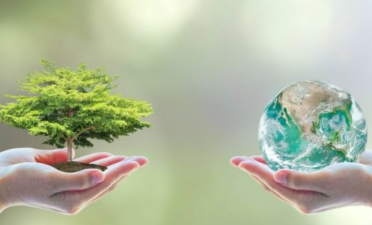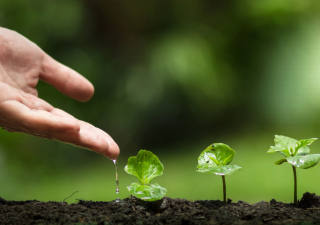With technological advancements, people's living standards have greatly improved, but pollution has also come with it.
Low-carbon and environmentally friendly practices are increasingly gaining attention. Here are some tips on green environmental protection that we can all contribute to in our daily lives.
Promote waste sorting to maximize waste utilization
- Sorted collection of domestic waste involves separating domestic waste into several categories based on different treatment and disposal methods. After sorting, each category of domestic waste is recycled or disposed of using appropriate methods. This reduces the amount of domestic waste ultimately disposed of, enables the recycling of some valuable materials, and mitigates environmental pollution caused by mixed domestic waste collection.
- Promoting domestic waste sorting is a necessary step to reducing environmental pollution, minimizing resource consumption, beautifying the living environment, achieving sustainable social development, and rational resource utilization. It is also a key component of urban environmental development and management.
- The main principles of domestic waste sorting include separating recyclables from non-recyclables, combustibles from non-combustibles, dry waste from wet waste, and hazardous waste from general waste. The specific sorting method should be selected based on the conditions of local domestic waste treatment facilities.

Recyclable Resources in Daily Life
- Waste Paper: Newspaper, book paper, packaging paper, office paper, advertising paper, cardboard boxes, etc.;
- Plastics: Various plastic bags, plastic foam, plastic packaging, disposable plastic lunch boxes and tableware, plastic toothbrushes, plastic cups, mineral water bottles, etc.;
- Glass: Glass bottles and broken glass, mirrors, light bulbs, thermoses, etc.;
- Metal: Cans, tins, toothpaste tubes, etc.;
- Cloth: Mainly includes discarded clothing, tablecloths, towels, cloth bags, etc.
Non-recyclable Resources in Daily Life
Mainly include cigarette butts, used batteries, coal slag, construction waste, paint and pigment, food residues, etc. Toxic waste includes used batteries, fluorescent tubes, mercury thermometers, paint cans, medicines, cosmetics, etc.
Green and Low-Carbon Travel
Choosing green and low-carbon travel means actively using transportation methods that reduce carbon dioxide emissions. This not only saves energy and reduces pollution, but also improves health and efficiency.
Minimize the use of private cars, prioritize walking, cycling, and public transportation, and use shared transportation and other green and low-carbon travel methods. Family cars should prioritize new energy vehicles or energy-saving models.
Strengthen awareness of conservation, ecology, and environmental protection, and continuously improve the ecological environment.
The environment is the material foundation for human survival and development, and is inextricably linked to health. With the growth of population, urbanization, and rapid industrialization, while humanity achieves economic development and technological progress, it also places tremendous pressure on the ecological environment. This results in environmental pollution, resource depletion, forest degradation, marine environmental degradation, and biodiversity loss, seriously endangering human health and sustainable development.
Be a conscientious protector and builder of the ecological environment
Caring for environmental hygiene and protecting it from pollution is the responsibility of every citizen. Protecting the environment is protecting ourselves. We should protect the ecological environment as we would our own eyes, and treat it as we would our own lives. We should truly strengthen our awareness of conservation, environmental protection, and ecological awareness, enhance our ecological literacy, adhere to a simple, moderate, green, and low-carbon lifestyle and work style, practice green consumption, and consciously cultivate good habits of conserving resources and not polluting the environment. We should strive to create a clean, comfortable, quiet, and beautiful working and living environment, contributing to the protection and promotion of human health.
Practice a simple and moderate lifestyle, starting with the little things
A simple, moderate, green, and low-carbon lifestyle is a civilized and healthy lifestyle that conforms to the laws of human and natural development and reflects the characteristics of the new era.
Start with the small things in daily life: Choose durable goods over disposable items; avoid buying rapidly changing electronic gadgets; choose low-carbon travel, prioritizing walking, cycling, or public transportation; utilize natural light and minimize indoor lighting when there is ample light, turning off lights when leaving, and shutting off electrical appliances promptly; set the air conditioning temperature appropriately, no lower than 26°C in summer and no higher than 20°C in winter; take the stairs more often and the elevator less often; reuse water, conserve paper, and order food on demand to avoid waste; use energy-saving products, green building materials, and environmentally friendly decoration materials; repurpose or donate unused items.






